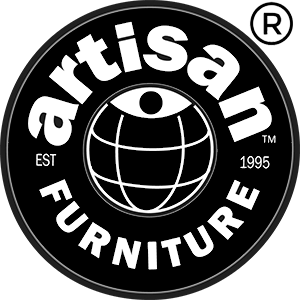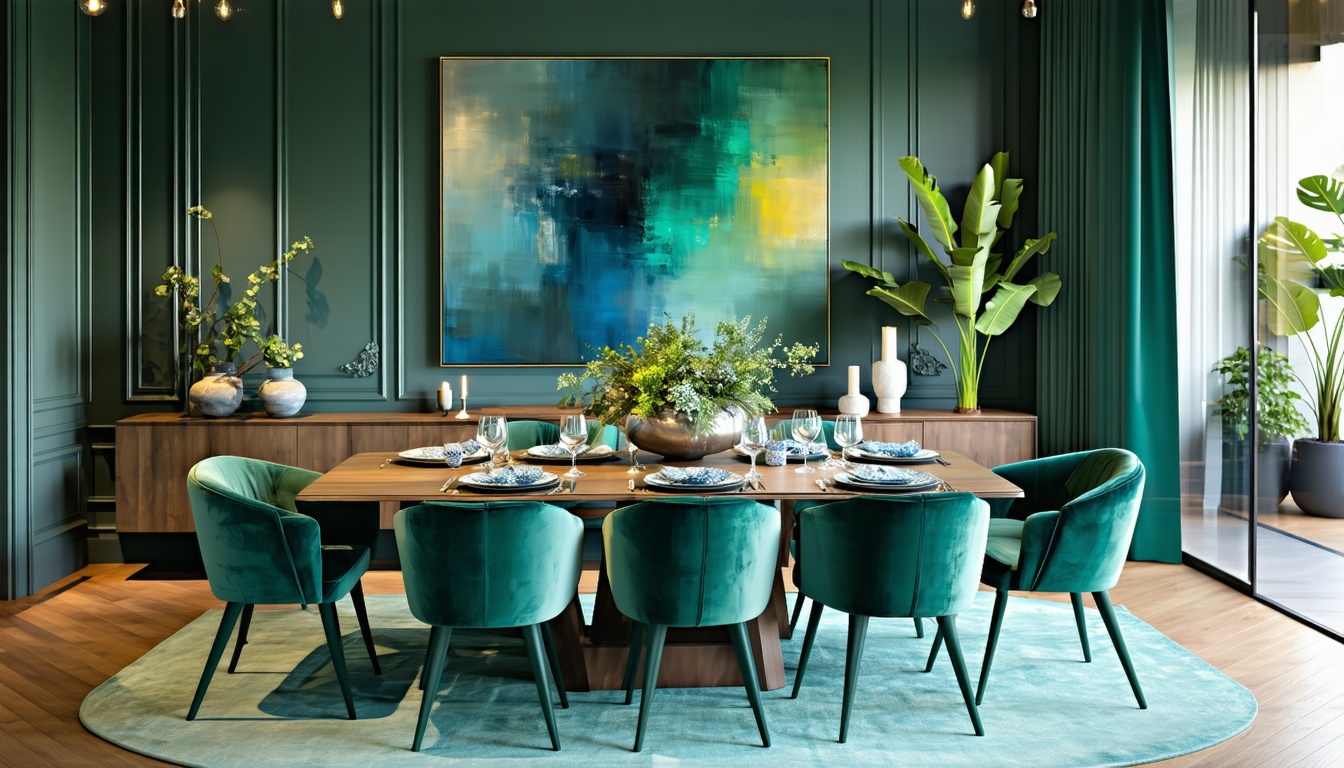European Dining Room Furniture Trends
Current Trends in Dining Room Furniture Colors
The colour palette for dining room furniture in Europe has evolved significantly in recent years. Retail buyers and e-commerce platforms must stay updated with these changes to effectively cater to consumer demands.
-
Neutral Tones: Neutral colours continue to dominate the European dining room furniture scene, with whites, beiges, and greys remaining favourites. These hues not only provide a sense of calm but also allow for versatility in design.
-
Bold and Vibrant Hues: Alongside the soft neutrals, bold colours such as deep blues, rich greens, and striking reds are gaining popularity. These shades add elements of personality and warmth to dining spaces, appealing to consumers looking for statement pieces.
-
Natural and Earthy Shades: Earthy colours inspired by nature, such as terracotta and olive tones, are trending as sustainability becomes a priority for many consumers. These hues often complement organic materials used in furniture construction.
The table below outlines the percentage of preference among consumers for various colour categories in recent surveys:
| Colour Category | Percentage Preference |
|---|---|
| Neutral Tones | 40% |
| Bold and Vibrant Hues | 30% |
| Natural and Earthy Shades | 20% |
| Other (pastels, etc.) | 10% |
Factors Driving Evolution in European Dining Room Furniture Colors
Several factors contribute to the evolution of dining room furniture colour trends in Europe:
-
Cultural Influences: As lifestyle and cultural trends shift, consumers are increasingly interested in expressing their individuality through colour choices. Exposure to international design styles influences local preferences, leading to a fusion of ideas.
-
Sustainability Concerns: With a greater awareness of environmental impact, consumers prefer colours that evoke a sense of nature. This trend is reflected in an increased demand for materials and surfaces that feature natural finishes and organic tones.
-
Technological Advancements: Advances in manufacturing technology allow for a wider range of finishing techniques, enabling the production of more vibrant and durable colours that were previously difficult to achieve.
-
Social Media Influence: Platforms like Instagram and Pinterest have a significant impact on consumer behaviour, with influencers showcasing modern dining room designs that feature trendy colours. This visibility drives sales as consumers aspire to recreate these looks in their own homes.
By understanding these evolving colour trends, retail buyers and e-commerce platforms can better meet the needs of European consumers and optimize their product sourcing strategies. For further insights into these trends, refer to our article on dining room furniture trends in europe and the european dining room furniture market analysis.
Popular Color Palettes in Europe
The colour palettes for dining room furniture in Europe have evolved significantly, reflecting changes in consumer preferences and interior design trends. Two primary categories dominate the market: neutral tones and bold, vibrant hues.
Neutral Tones: Whites, Beiges, and Greys
Neutral colours such as whites, beiges, and greys continue to be popular choices for dining room furniture. These shades provide a versatile backdrop suitable for various styles and personal tastes.
| Colour | Description |
|---|---|
| White | Offers a clean, airy feel; ideal for minimalistic and Scandinavian designs. |
| Beige | A warm tone that adds softness; works well in traditional and contemporary settings. |
| Grey | A modern colour that provides a sleek and sophisticated look; pairs well with bold accents. |
Many consumers appreciate the calming effects of neutral tones, which create an inviting atmosphere in dining spaces. The ability to easily complement different decor styles makes neutrals a staple choice among European buyers. They are commonly found in collections of bespoke dining room furniture in the UK as well as in traditional dining room furniture across Europe.
Bold and Vibrant Hues: Blues, Greens, and Reds
Conversely, there is a rising trend towards bold and vibrant colours, which add personality and flair to dining areas. Rich shades of blue, green, and red are becoming increasingly sought after by those looking to make a statement.
| Colour | Description |
|---|---|
| Blue | Evokes a sense of calm and tranquility; popular for coastal or nautical themes. |
| Green | Symbolises nature and sustainability; aligns with eco-friendly design trends. |
| Red | Energising and passionate; often used as an accent in modern or eclectic styles. |
These hues are often incorporated into furniture pieces, such as chairs and dining table accents, allowing homeowners to express individuality while enhancing the overall aesthetic of the room. Retail buyers should stay informed about the latest dining room furniture trends in Europe to ensure they meet consumer demand for these vibrant shades.
As the trends for dining room furniture colour palettes continue to evolve across Europe, understanding the balance between neutral and bold colours will aid in making informed sourcing decisions. The preferences reflect broader lifestyle choices and cultural shifts within the European market. For further insights, explore the European dining room furniture market analysis to understand market dynamics in depth.
Material Preferences in European Dining Room Furniture
Material selection plays a pivotal role in the evolution of dining room furniture trends across Europe. The increasing demand for quality and aesthetic appeal drives buyers to consider various finishes and compositions, particularly focusing on wood and metallic options.
Wood Finishes
Wood remains a timeless choice for dining room furniture, characterised by its warmth and versatility. European consumers display a notable preference for various wood finishes, which reflect both traditional craftsmanship and modern design.
| Wood Type | Characteristics | Popular Finishes |
|---|---|---|
| Oak | Strong, durable, and has a prominent grain | Natural, Whitewash, Stained |
| Walnut | Rich colour and excellent strength | Dark Stain, Oil Finish |
| Pine | Lightweight and cost-effective | Clear Coat, Painted |
| Ash | Light in colour and responds well to finishes | Natural Finish, White |
The shift towards sustainable and eco-friendly sourcing practices has led many manufacturers to focus on responsibly harvested timber. Consumers are becoming more discerning, often seeking bespoke options that align with their individual style preferences. The trend towards bespoke dining room furniture in the UK is indicative of this growing demand.
Metallic Accents
Incorporating metallic accents into dining room furniture has gained popularity as a way to add a touch of elegance and modernity. These accents are typically used in hardware, legs, and decorative elements, providing contrast that complements wooden pieces.
| Metal Type | Characteristics | Common Uses |
|---|---|---|
| Stainless Steel | Durable and resistant to corrosion | Legs, Frames |
| Brass | Offers warmth and a vintage appeal | Handles, Decorative Elements |
| Copper | Unique colour and patina development | Accent Pieces, Inlays |
| Aluminium | Lightweight and versatile | Structural Components |
The integration of metals aids in the enhancement of visual interest within dining spaces. Retail buyers and e-commerce platforms should note these preferences, as they dictate broader trends in the dining room furniture e-commerce market in Europe.
Understanding these material preferences not only aids in optimizing product sourcing but also aligns with the evolving aesthetic and functional requirements of European consumers. For further insights, consider exploring our dining room furniture material preferences in Europe.
Pricing Trends in European Dining Room Furniture
As the dining room furniture market evolves in Europe, distinct pricing trends have emerged, shaped by consumers’ preferences for quality and style. Retail buyers and e-commerce platforms must understand these trends to optimise their product sourcing effectively.
Premium Pricing for High-Quality Materials
In Europe, there is a noticeable trend towards premium pricing for dining room furniture crafted from high-quality materials. Consumers are increasingly willing to invest in durable and aesthetically pleasing pieces, recognising that furniture is a long-term investment. The importance of sustainability and craftsmanship also plays a significant role in this trend, with many buyers seeking items made from responsibly sourced materials.
The table below illustrates the typical price ranges for dining room furniture based on material quality:
| Material Type | Price Range (€) |
|---|---|
| Solid Wood | 800 – 1,500 |
| Engineered Wood | 400 – 800 |
| Metal Accents | 300 – 600 |
| Glass | 250 – 700 |
These price ranges indicate that while there are budget-friendly options available, the higher investment in solid wood and quality metal accents is often justified by durability and longevity.
Budget-Friendly Options in Trendy Colors
Conversely, budget-friendly options are also in demand as more consumers look for stylish dining room furniture without breaking the bank. Many buyers are seeking affordable solutions that incorporate current colour trends. Manufacturers and retailers are responding to this demand by offering a variety of trendy coloured finishes at lower price points.
The following table provides insight into the price range for budget-friendly dining room furniture by colour and style:
| Colour/Style | Price Range (€) |
|---|---|
| Natural Wood Finish | 200 – 400 |
| Painted/Coated MDF | 150 – 300 |
| Upholstered Chairs | 120 – 250 |
| Mix of Materials | 175 – 350 |
These price points reveal that consumers can indeed find stylish and modern dining room furniture options without a significant financial commitment. Retailers focusing on affordable dining room furniture in Europe are likely to attract a growing segment of cost-conscious shoppers.
Understanding these pricing trends and the dual market for both premium and budget options will help retailers and e-commerce platforms effectively cater to the varying needs of European consumers. By staying attuned to the evolving preferences in style and material, buyers can make informed decisions that align with current market trends. For deeper insights into the pricing strategies that influence purchasing decisions, explore our article on dining room furniture pricing strategies in Europe.


